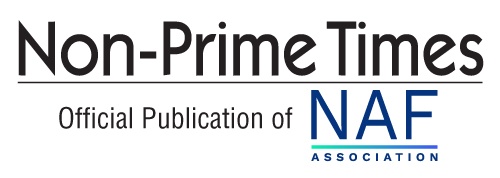Customers want simplified digital purchasing experiences today, and many automotive retailers, lenders and OEMs have been aggressively building consumer-facing web ecosystems to suit their needs. Many OEMs and retailers believe their digital storefronts are increasingly more appealing and mobile-friendly, and they are also making great strides in synching online inventory with real-time search expectations.
The ability to conduct online business is being tested by a complicated automotive path to purchase. A great challenge lies in the fact that many other retail-oriented shopping experiences have conditioned consumers to believe today’s shopping process is as easy as setting up a website and connecting to large inventory pools.
Digitizing the back office is complex
Unfortunately, buying a car is not like buying a pair of jeans online, and there are many moving parts that need to work cohesively, efficiently, securely, and in real-time – all behind the scenes. Since the pandemic, many retailers, lenders, OEM partners and service providers have worked hard at building a consumer-facing digital experience. However, very little of this experience actually works efficiently if there is no matching digital workflow strategy on the back-end to make deals actually come to life.
A recent industry survey¹ was commissioned to better understand where automotive, dealer, and auto finance professionals are still finding barriers in adopting more digitized solutions for back-office documentation processing.
More work is needed to complete digital transformation
The findings revealed there is still more work needed to truly digitize the back-office. Much of this begins with understanding how each ecosystem player is automating their workflows, and where automation is enabling digital transformation strategies. According to the survey results, the greatest number of respondents had implemented automated workflows into portfolio analysis (25%), followed by payment processing (21%), and reconciliation (17%).
However, only 26% of lender executives said they are processing data from digital solutions to enable automation and another 43% said they were unsure if automation was taking place. Despite these numbers, 75% said it is either somewhat or very important to create a fully compliant digital strategy that automates all workflows and back-office processes. What’s concerning is that 23% of executives said they are either not confident that they can achieve this, or they are not sure.
Why challenges remain
Achieving a fully digital finance experience is still a challenge for many auto finance companies, with 23% saying they still require greater compliance and adherence to federal regulations to achieve a fully digital experience. Another 20% said they still need to create a more seamless transaction experience, followed by a more consistent funding process (16%), and securitization and asset monetization (15%).
This is also important because less than 8% of executives said they are actually fully digital, and roughly a quarter of lender executives surveyed (26%) said at least half of their loan documents are still paper-based. Furthermore, 38% of lender executives said they are still using physical mail to share loan documents with customers, while 35% said they are utilizing email.
Lenders have recognized the importance of evolving from paper , as seen with the emergence of eContracting solutions. This has been further promoted and incentivized by captive lenders to help more franchise dealerships to adopt. Lenders and dealers have seen significant enhancements here by way of faster processing, streamlined workflows and a more reliable, trusted document handling system.
How a solutions approach will solve many obstacles
Additional solutions exist, from digital signatures, to leveraging digital vaults to protect who has access to documentation or digital transfer between the dealer and lender to get a contract funded. And ultimately, the ability for documents to be created so lenders can digitalize and securitize assets. There is a future of paperless and efficient process that can be achieved in the ecosystem – backed by the security of a digital transaction ledger and audit trail.
The next phase of digital transformation will leverage words such as e-contracting, multi-channel origination, digital certainty, auditing, document governance, security, post-transaction asset management and analysis tasks across all parts of the document journey. It’s not as flashy as the customer experience rally call of the past several years, but nonetheless critical for the industry to evolve to the next chapter of digitalization.
By now it is clear that professionals throughout the automotive and auto finance value chain understand the importance of having a digital presence, but many still find a lot of challenges in deploying a fully digital ecosystem for the entire process. This latest research on trends provides a clearer picture of not only the additional education needed to build digital strategies for automotive financing, but also the need for deploying the right resources that will complement customer facing digital experiences with back-office automated processes.
¹: https://www.wolterskluwer.com/en/expert-insights/a-survey-of-automotive-industrys-journey-from-paper-to-digital#gc



